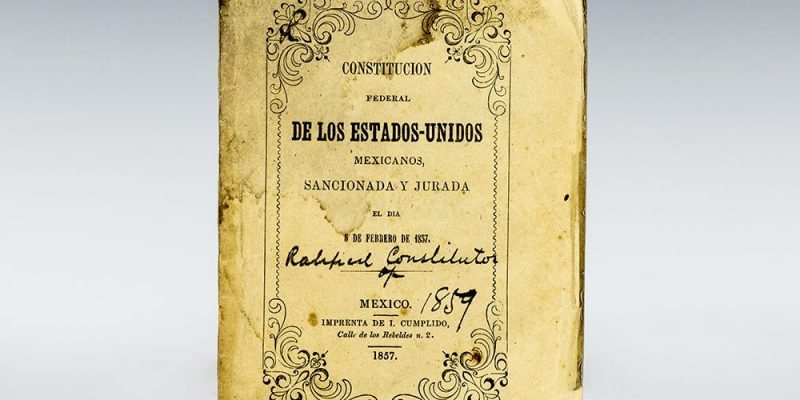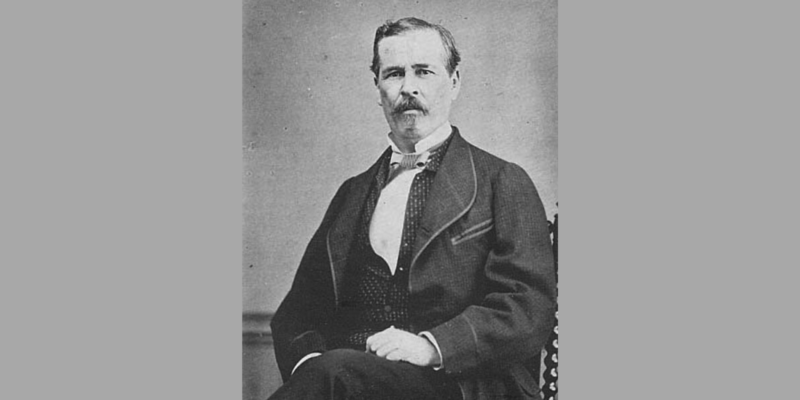We explain what the Mexican Constitution of 1857 is and what its structure is like. Also, what are its characteristics and derogation.
What was the Mexican Constitution of 1857?
The Political Constitution of the Republic of Mexico , sworn in on February 5, 1857 , was the Magna Carta drawn up by the Constituent Congress of that same year, during the presidency of the liberal Ignacio Comonfort, predecessor of the famous Benito Juárez .
In the drafting of this constitution, the liberal spirit prevailed that enshrined numerous equal civil liberties for Mexican citizens without distinction and attacked the practices of the feudal and noble order that still remained since colonial times.
Its promulgation was very controversial since it went against the interests of the Catholic Church and the conservative sectors of society , for which the Conservative Party firmly opposed its approval, thus unleashing social polarization and political confrontations that later They gave rise to the War of Reform or the Three Years' War (1858-1861) that culminated in the defeat of the conservatives and the establishment of the liberal government of Benito Juárez.
Background to the Mexican Constitution of 1857

The Mexican Constitution of 1857 obeys the liberal spirit that had gradually developed since the times of the Mexican Empire , when the ideas of the French Enlightenment had prevented the formation of its own monarchy in the old Viceroyalty of Spain .
This liberal thought seized power after the end of the Santa Anna dictatorship , when Comonfort assumed the interim presidency in 1855 and summoned a Constituent Congress to draft a new constitution, in accordance with the provisions of the Ayutla Plan.
Drafting of the Mexican Constitution of 1857
The Constituent Congress convened by the liberals in 1855 was made up of two groups: moderate liberals who advocated the return of the 1824 Constitution and pure liberals who wanted a new constitution with much more radical changes.
The latter, finally, managed to impose their proposals despite the influence that President Comonfort exercised in the moderate bench, since they were in the majority. Among these “pure” liberal constituents, Ponciano Arriaga, Guillermo Prieto, Francisco Zarco, José María Mata and Santos Degollado stood out.
Structure of the Mexican Constitution of 1857
The new constitution was structured based on eight (8) titles and 128 articles. The titles contemplated the following topics:
- Title I. On the rights of man; Of the Mexicans; Of foreigners; Of Mexican citizens.
- Title II. Of national sovereignty and the form of government; Of the integral parts of the federation and the national territory.
- Title III. Of the division of powers.
- Title IV. Of the responsibility of public officials.
- Title V. Of the States of the Federation.
- Title VI. General preventions.
- Title VII. Of the reform to the Constitution.
- Title VIII. Of the inviolability of the Constitution.
Important points of the Mexican Constitution of 1857

Among the most momentous changes included in the new constitution are the consecration of freedom of expression , freedom of assembly, freedom to carry arms and other individual freedoms for Mexican citizens.
It also confirmed the abolition of slavery , eliminated the possibility of going to prison for civil debts , as well as forms of torture and the death penalty.
He also eliminated the alcabalas and internal customs , prohibited the noble titles, monopolies and hereditary honors, promulgated secular education and alienated the real estate of the Catholic Church, giving the State a preponderant role in matters previously ruled by religion.
Federalization of the Mexican Constitution of 1857
Another of the great changes introduced by this constitution had to do with the federal character it gave to the country , made up from then on by 23 states and a federal territory, exceeding the 20 enshrined in the Constitution of 1824.
These states were: Mexico, Guanajuato, Oaxaca, Puebla, Michoacán, San Luis Potosí, Veracruz, Yucatán, Jalisco, Zacatecas, Querétaro, Sonora, Tabasco, Tamaulipas, Nuevo León, Coahuilla, Durango, Chihuahua, Chiapas, Sinaloa, and the states newly created from Guerrero, Tlaxcala, Colima and Aguascalientes.
Opponents of the Mexican Constitution of 1857

The main opponents of this new legal order were those whose ways of life and social power shares were directly affected such as the Catholic Church and its supporters, especially the conservative elites around the Conservative Party who viewed such liberalization of society with a bad eye. and they assimilated it to chaos, heresy or political anarchy .
Promulgation of the Mexican Constitution of 1857
The 1857 constitution was sworn in on February 5, 1857 , by the President of the Republic and the president of Congress, at that time Valentín Gómez Farías.
Reactions of the Mexican Constitution of 1857

There was a first uprising in Zacapoaxtla and Puebla, which was quickly put down by the army, but it would be just an announcement of the war to come.
Detractors of the Magna Carta such as Félix María Zuloaga incited a coup , calling in writing to ignore the new constitution. In 1857 the Plan of Tacubaya was proclaimed, which aspired to repeal the Constitution and summon a new Constituent Congress.
Many public officials were arrested by conservative troops and others resigned from their posts, plunging the country into chaos from which the War of Reform would emerge.
Importance of the Mexican Constitution of 1857
Despite its turbulent history, the Constitution of 1857 is fundamental in the liberal history of Mexico since it was a leap forward in terms of the recognition of individual freedoms and human rights , perhaps even too advanced for its time (and hence many of its drawbacks).
Validity and repeal of the Mexican Constitution of 1857
The Constitution was not applied until 1861, when the War of the Reform ended . And even though the Liberals won her, the Conservative resentment remained and led to her collaboration with the French during the Second French Intervention in Mexico.
Thus came the temporary overthrow of the Liberals in 1862 and the declaration of the Second Mexican Empire, which fell in 1867 and returned power to the Liberals. The 1857 constitution remained in effect from then until 1917, when a new Magna Carta was promulgated during the Mexican Revolution .
The above content published at Collaborative Research Group is for informational and educational purposes only and has been developed by referring reliable sources and recommendations from technology experts. We do not have any contact with official entities nor do we intend to replace the information that they emit.
MA student of the TransAtlantic Masters program at UNC-Chapel Hill. Political Science with a focus on European Studies. Expressed ideas are open to revision. He not only covers Technical articles but also has skills in the fields of SEO, graphics, web development and coding. .
Leave a reply
Your email address will not be published. Required fields are marked *Recent post

Sport: What Is It, Types, Risks, Features, Characteristics and Examples

Dogs: Emergence, Features, Characteristics, Feeding and Breeds

Story: Definition, Elements, Structure, Features and Characteristics

